Templo Baengnyeonsa en Gangjin (백련사(강진))
10.0 Km 22596 2021-02-18
Baengnyeonsa-gil 145, Doam-myeon, Gangjin-gun, Jeollanam-do.
061-432-0837
Construido en base a la doctrina Cheontae, el templo Baengnyeonsa tuvo un rol importante en la difusión del budismo. Localizado al este del monte Mandeoksan, es famoso por su bosque de camelias que bordea el camino hacia el templo. Una de las dos colonias más bellas de camelias de Corea, incluidas las camelias de la isla Odongdo en Yeosu, esta colonia de camelias fue designada Tesoro Natural Nº 151. Las camelias florecen a finales de marzo. La bahía de Gangjin, vista desde el templo Baengnyeonsa, y el camino que lleva desde el templo hasta Dasan Chodang también son famosos por su belleza escénica.
Bahía Gangjinman (강진만)
10.1 Km 28589 2021-06-24
Beoljeong-ri, Sinjeon-myeon, Gangjin-gun, Jeollanam-do
Gangjin tiene muchos paisajes escénicos con el monte Wolchulsan en el norte y el mar de Gugangpo lleno de pequeñas islas y pantanos en el sur. También es lugar de bellas montañas, ríos y llanuras que se añaden al encanto de su paisaje natural. El templo Baengnyeonsa y Dasan Chodang en el oeste de la bahía y los juncos junto la costa conforman una de las escenas más bellas para contemplar. También, la Carretera Nacional Nro. 23, que recorre a través del borde este de la bahía, pasando del municipio de Gangjin-eup y Maryang, es famosa por sus espectaculares paisajes. Por encima de todo, es muy recomendable acercarse al pabellón Cheonilgak en frente de Dasan Chodong Dongam (Monasterio del Este) para una vista panorámica de la costa de Guganpo. La caminata que atraviesa el monte Mandeoksan llega hasta Baengyeonsa, un templo con unas vistas del océano maravillosas.
Parque Provincial del Monte Cheongwansan (천관산도립공원)
12.1 Km 17099 2021-12-28
Gwansan-eup, Jangheung-gun, Jeollanam-do.
El Parque Provincial del Monte Cheongwansan se extiende entre Gwansan-eup y Daedeok-eup, en Jangheung-gun, Jeollanam-do. Fue nombrado Parque Provincial en 1998 por sus rocas extraordinarias, que amenazan con apuñalar el cielo y su paisaje natural en general.
El monte Cheongwansan (723 m sobre el nivel del mar) es una de las cinco montañas principales de la región Honam junto con Jirisan, Naejangsan, Wolchulsan y Naebyeonsan. Toda la montaña está llena de rocas y picos, entre los que destacan las rocas Agibawi, Sajabawi y Bucheobawi, así como picos Cheonjubong, Dotdaebong y Galdaebong, que forman la imagen de una corona de laureles, por esta razón la montaña se llama Cheongwansan (cheon: cielo, gwan: corona).
Desde la cima se ve el Mar del Sur, al norte los montes Wolchulsan, Mudeungsan e incluso en días despejados Hallasan de la isla Jeju. Cerca de la cima hay gran concentración de juncos eoksae, y aquí es donde se celebra el Festival del Eoksae del Monte Cheongwansan cada otoño.
En la mitad de la ladera de la montaña se encuentra el templo Cheongwansa que conserva varios patrimonios culturales. Cerca del parque, están el Bosque Recreativo del Monte Cheongwansan y el Parque Cultural del Monte Cheongwansan. La mejor época para visitar este lugar es desde finales de septiembre hasta mediados de noviembre.
Seoladawon [Korea Quality] / 설아다원 [한국관광 품질인증]
13.4 Km 10534 2023-04-13
153-21, Samseong-gil, Bugil-myeon, Haenam-gun, Jeollanam-do
+82-61-533-3083, +82-10-7616-6129
Located at the foot of Mt. Duryunsan in Haenam, Jeollanam-do Province, Seola Dawon is committed to preserving and inheriting the tea culture and nature of the region. The owner began to cultivate this place after hearing the concerns about the absence of a person who would inherit the tea culture of this region from a Buddhist monk he met at Iljiam Hermitage of Daeheungsa Temple in Haenam in 1996. Meanwhile, nine young men who studied tea together cultivated the green tea field in Haenam and built houses. After that, people who had affection for teas began to visit Seola Dawon. Since there were no decent accommodations for people who came from afar, they built eight Korean traditional-style houses in all including a Sarangbang made with stones, the earthen house, the wall-frame house, and the earthen bag house. The Korean traditional-style house was built in 2003 as a cultural space and later remodeled into rooms for the operation of Hanok Stay.
Casa Natal de Yeongnang (강진영랑생가)
15.2 Km 20413 2021-03-25
Yeongnangsaengga-gil 15, Gangjin-eup, Gangjin-gun, Jeollanam-do.
+82-61-430-3185
Kim Yun-sik nació el 16 de enero de 1903, el primero de 2 hermanos y 3 hermanas. Bajo su apodo Yeongnang, fue muy activo en la literatura hasta su fallecimiento, el 29 de septiembre de 1950. Entre los 80 poemas que publicó, más de 60 fueron escritos en este lugar donde vivió bajo la resistencia del imperialismo japonés y rechazando ponerse un nombre japonés. Después de trasladarse a Seúl, en 1948, su lugar de nacimiento fue vendido varias veces hasta que el municipio de Gangjin-gun lo compró en 1985 para restaurarlo a su estado original con techo de paja.
El lugar presenta muchos de los materiales que el poeta usaba para sus escritos, además de contar con un pequeño pozo, árboles de camelia, jangdokdae (una plataforma donde se matienen grandes vasijas de arcilla utilizadas para almacenar alimentos), árboles de caqui y un jardín de peonías.
Teleférico del Monte Duryunsan (두륜산케이블카)
15.7 Km 53171 2023-02-09
Daeheungsa-gil 88-45, Samsan-myeon, Haenam-gun, Jeollanam-do
El monte Duryunsan (703 m) es una famosa montaña de Jeollanam-do. Con ocho picos, es el hogar de diferentes templos y lugares históricos. La montaña, además, tiene una gran importancia como sitio de investigación por sus bosques de plantas de clima cálido y amplias hojas, y por sus árboles. Se puede acceder al pico de la montaña en 2-3 horas de escalada, desde la entrada del templo Daeheungsa o usando el teleférico (8 minutos), que sale desde la entrada en el lado opuesto de la montaña (y lleva a los visitantes a un punto más bajo que el pico). Desde lo alto de Duryunsan se pueden ver muchas islas de la región y, en un día claro, hasta se divisa el monte Hallasan de la isla de Jeju.
Cheongsu Minmul Jangeo - Haenam Branch (청수민물장어 해남)
15.8 Km 120 2021-03-26
542, Haenam-ro, Haenam-gun, Jeollanam-do
+82-61-534-8484
A restaurant that serves live eel cooked on the spot. This restaurant's signature menu is grilled eel. This Korean dishes restaurant is located in Haenam-gun, Jeollanam-do.
Jeonju Sikdang (전주식당)
16.5 Km 24728 2021-10-16
170, Daeheungsa-gil, Haenam-gun, Jeollanam-do
+82-61-532-7696
Jeonju Sikdang is a noted restaurant for Haenam folk cuisine. It was designated by the Korean Traditional Culture Preservation Society after
getting many awards, such as Special Culinary Award.
The main items on the menu are pyogo jeongol (shitake mushroom hot pot) and sanchae jeongsik (set menu with seasoned wild vegetables). In particular, the restaurant's signature pyogo jeongol uses ingredients that are all prepared in house using organic shitake mushrooms, beef, Manila clams, along with other seafood and vegetables, giving it a clean and rich taste. The theme of the restaurant, “Enjoying natural dishes in the mountains,” fits perfectly with the taste of their mushrooms, which carries a excellent taste without the addition of any artificial seasoning. The restaurant also sells dongdongju (traditional Korean liquor), a drink that brings deeper flavors of the food.
Parque Provincial del Monte Duryunsan (두륜산도립공원)
16.6 Km 55544 2023-02-09
Daeheungsa-gil 400, Samsan-myeon, Haenam-gun, Jeollanam-do.
Conteniendo muchos templos budistas y paisajes espectaculares, el monte Duryunsan mide 703 metros de altura y se encuentra en el sur de la península coreana. Formado por bosques subtropicales, la montaña es un interesante punto de observación por la diversidad floral. Durante el quinto año del reinado del rey Jinheung (año 544), el monje budista Ado construyó el templo Daedunsa, que es un importante lugar histórico relacionado también con el monje Seosan. Este templo presume de densos bosques de arces y camelias. Sobrecogedoras vistas de los valles y bonitos árboles rodean la carretera de 2 km que permite acceder al templo.
Haemaru healingsoup [Korea Quality] / 해마루 힐링숲 [한국관광 품질인증]
16.8 Km 5747 2020-12-12
108-35, Donghae-gil Bukpyeong-myeon, Haenam-gun, Jeollanam-do
+82-10-2332-6303
'Haemaru Healing Forest is a guesthouse situated at the foot of Duryunsan Mountain, Haenam in front of Wondo Beach and surrounded by a cypress grove. The mountain, cypress grove, and beach are all visible from the main floored hall room. For this reason, many of the guests who stayed here say that the picturesque view seems to change day by day. The town where the guesthouse is located is specially designed as a 'hanok village,' consisting mostly of traditional Korean houses of Jeollanam-do. It is also widely known as 'Haenam Kimchi Village' because of their famous cabbages, which are grown in the natural environment and are used to make kimchi. Specifically, there are three villages in this area: 'Green Experience Village,' 'Farm Stay Village,' and 'Resort Village.' There is a public swimming pool in the area managed by the villagers and is very popular among visitors, with ticket sales reaching KRW 100,000,000 a year. One of the advantages of staying at this guesthouse is that it’s within a one-hour ride to a number of popular nature destinations such as Wando Cheongsando Island, Gangjin Dasan Chodang, Jangheung Cheongwansan Mountain, Woodland, and Yeongam Wolchunsan Mountain. Haenam is known as one of the best regions of Korea for enjoying the famous Jeolla-do cuisine, so visitors to Haenam are advised to try the local food. The villagers built these traditional Korean guesthouses so that their visitors can have a day of relaxation in nature, away from their hectic city life. With this mind, they used natural pinewood and red clay from Gangwon-do to build authentic traditional Korean houses and utilized traditional Korean tiles from Goryeong. The name 'Haemaru Healing Forest' was given by the owner of the guesthouse, with the subtitle 'A place where you can tell your story.' The guesthouse buildings are in 'ㄱ' shape. The main building, called 'anchae' in Korean, has floor area of 72m², which is big enough for up to 25 people. There are two rooms, a large living room, and a kitchen in this building. The rooms are furnished with sofa, television, air conditioner, refrigerator, and table just like an ordinary home so that guests can feel at home during their stay. The 'bakkatchae,' or 'detached house,' is a single room with capacity of 6 and is furnished with air conditioner and bathroom. The guesthouse is owned by a couple who still work in Seoul and need to travel back and forth between Seoul and Haenam frequently. They're both nature lovers, so their most favorite place in the house is the kitchen garden where they cultivate their own organic lettuce, perilla leaves, and chili peppers. The kitchen garden is open to guests who want to try the homegrown organic vegetables. Various experience programs are offered here as well, such as yunnori, dadeumi, jwibulnori, and kimchi making. Jwibulnori is a traditional Korean game played on the eve of Daeboreum or First Full Moon Day, where people burn dry grass on the ridges of rice paddies and fields and others spin cans of flames attached to the end of a stick or a sling. For safety reasons, this game is played with the consent and participation of the villagers, so be sure to ask the owner of the guesthouse when the game is played. It’s free for groups of more than 10 people. As for the kimchi-making class, it is offered by the guesthouse owner's younger brother and sister-in-law who live and run a kimchi factory in the village. They will teach you how to make kimchi, step-by-step, start to end. The kimchi-making class is a paid program, so be sure to ask the guesthouse owner how much and when the class is held.
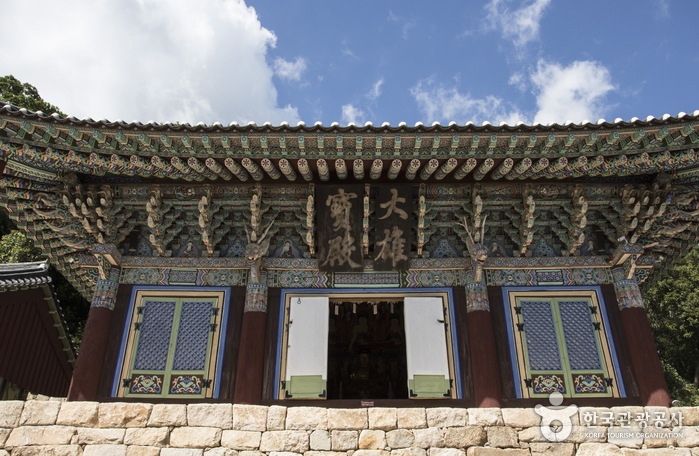
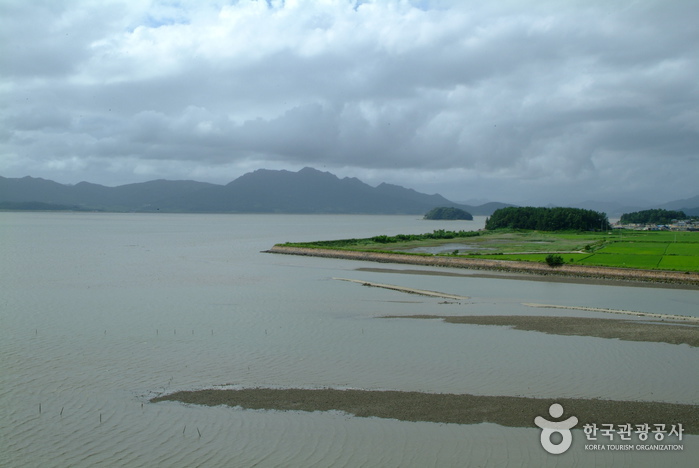

![Seoladawon [Korea Quality] / 설아다원 [한국관광 품질인증]](http://tong.visitkorea.or.kr/cms/resource/63/2584863_image2_1.jpg)
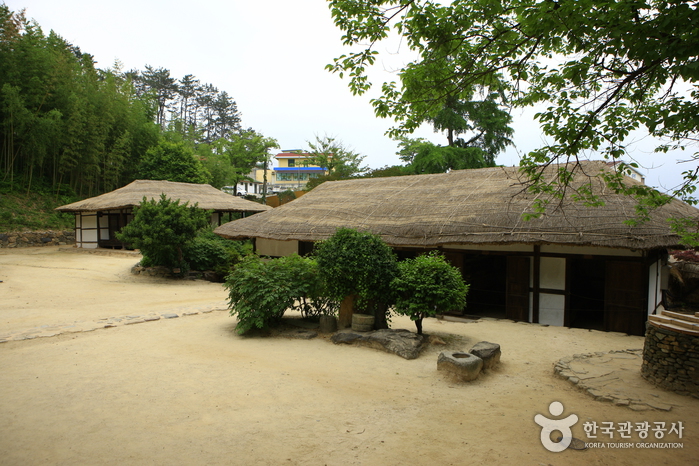
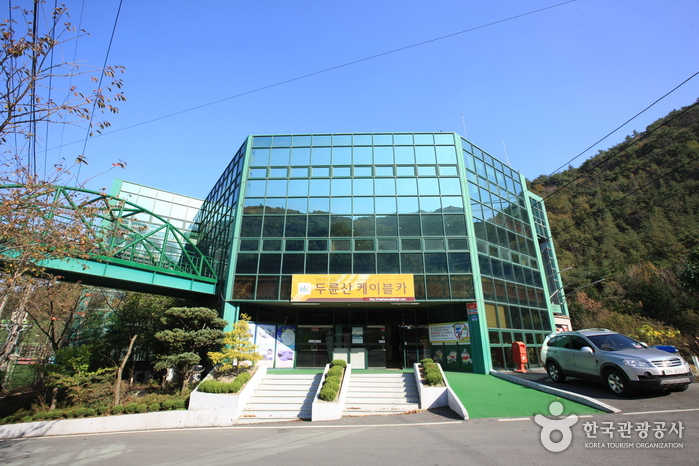
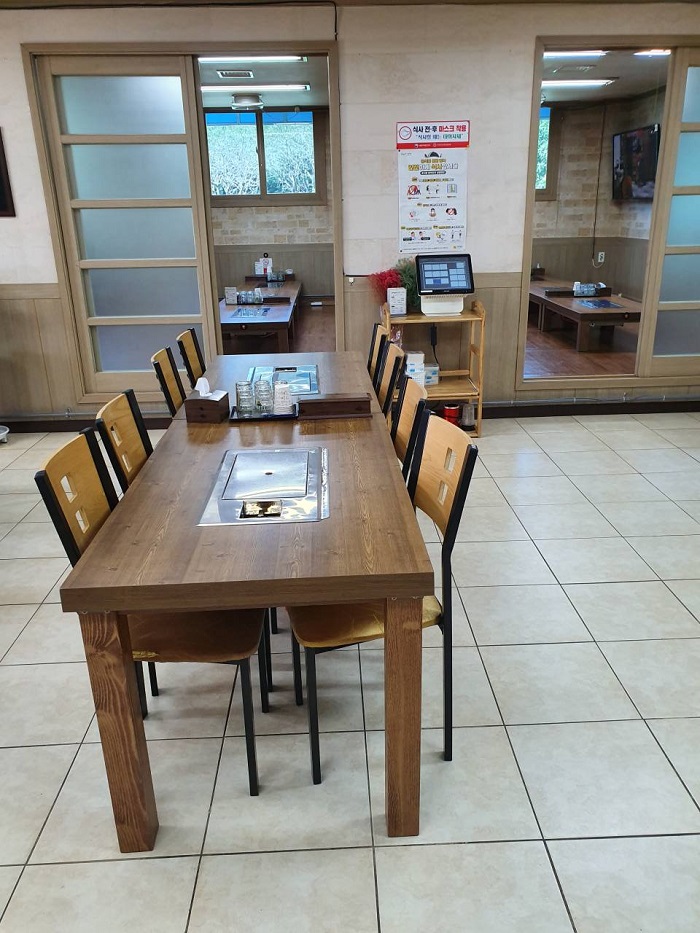
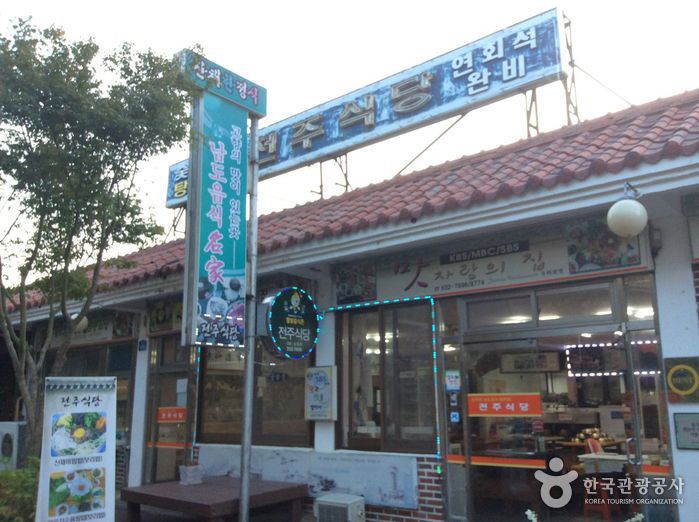
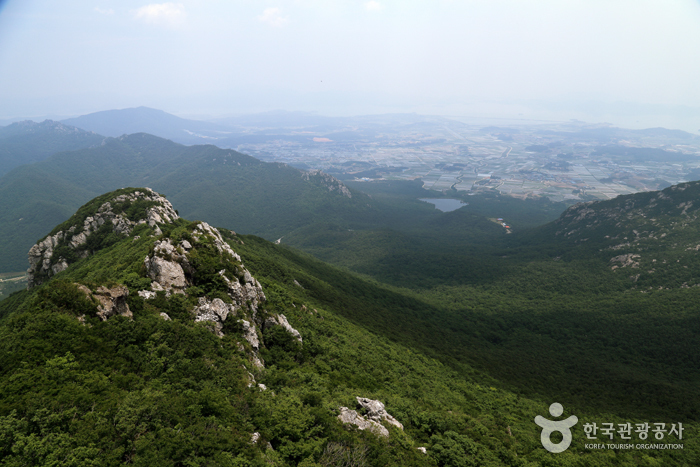
![Haemaru healingsoup [Korea Quality] / 해마루 힐링숲 [한국관광 품질인증]](http://tong.visitkorea.or.kr/cms/resource/35/2049835_image2_1.jpg)
 Español
Español
 한국어
한국어 English
English 日本語
日本語 中文(简体)
中文(简体) Deutsch
Deutsch Français
Français Русский
Русский